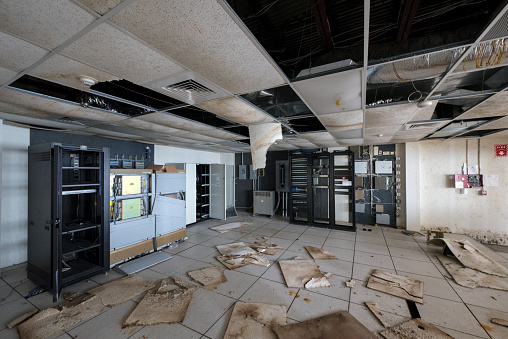“The data center is dead” is a popular opinion, however Data Centers are not dead. Public cloud revenue is growing at roughly 25% YoY with an estimated $330 billion total revenue for 2021. And Gartner predicted in 2019 that 80% of enterprises would close their traditional data centers by 2025. With stats like those, no one would fault you for thinking that servers are going to be a thing of the past for most enterprises — just like typing pools and interoffice memos.
Of course, deploying applications in the cloud can have many benefits. Agility and reduced time-to-market are often at the top of the list. Product launches are no longer dependent on procuring hardware and building out the facilities the hardware will live in — a game changer for the startup ecosystem over the last 10-15 years. I remember working at a startup circa 1999 where the production infrastructure was in a glass-walled data center adjacent to the lobby. That was a point of pride at the time but would seem ludicrous today.
Cost is often cited as a cloud advantage, but many IT leaders find that this is a mirage in the long run. Prototyping a product using cloud-based infrastructure can preserve valuable capital that would otherwise be spent on facilities, hardware and personnel. However, cloud costs tend to scale linearly (or semi-linearly) with product revenue and can really eat into margins at scale. Vendor lock-in can become a significant issue, and it’s easy to land in cloud jail if you haven’t given some forethought to infrastructure strategy.
In the enterprise world, many have been eager to adopt public cloud for both the agility and (perceived) cost advantages. However, in these larger orgs, even the agility benefit is suspect. Some of it is achieved by implementors doing an end-run around processes and controls — deploying in cloud infrastructure that’s outside the purview of traditional enterprise IT. Software and product teams love bypassing those roadblocks, but at the risk of a future security or compliance crisis for the C-suite.
That has many orgs at least partially reconsidering “cloud first” or “all in on cloud” strategies. And some orgs even considering “cloud repatriation” — moving workloads from public cloud back into enterprise data centers. This is a real trend that’s gaining momentum, not just a wacky contrarian concept. Dropbox is a famous example, but certainly not the only one.
In fact, it’s estimated that total data center spend passed $200 billion in 2021, growing at 6% YoY. That’s despite COVID-19 which delayed many data center projects due to in-person work restrictions and supply chain issues. Odds are that YoY growth will rebound and then some as we return to normal over the next year or two. Far from dead in my book.


